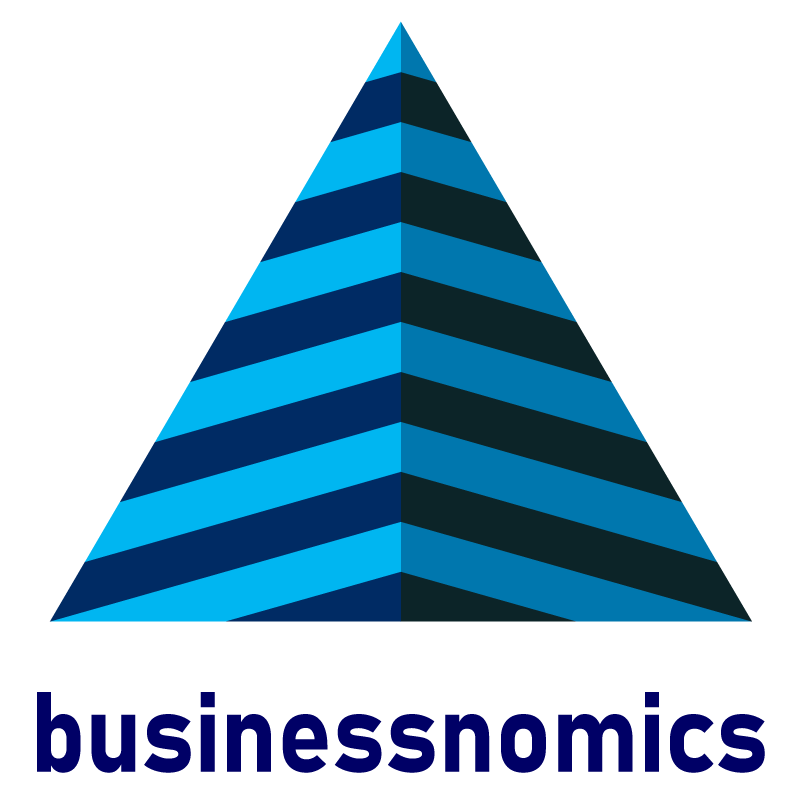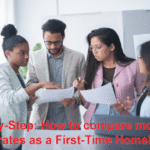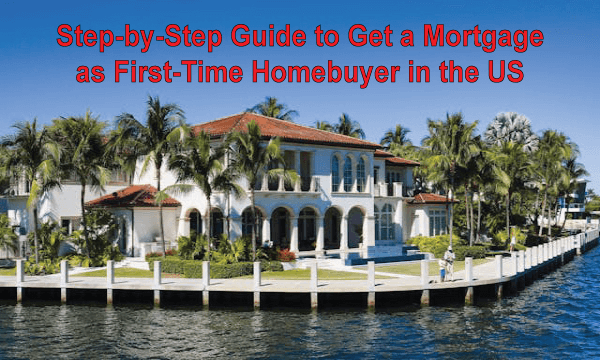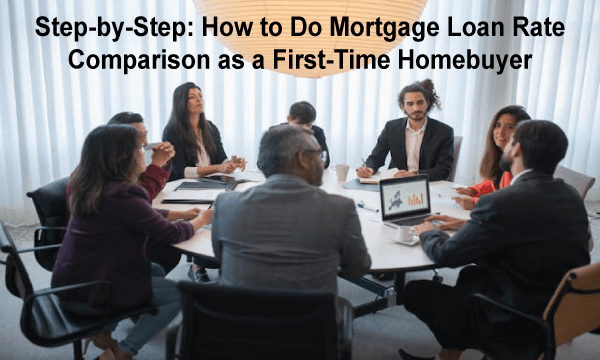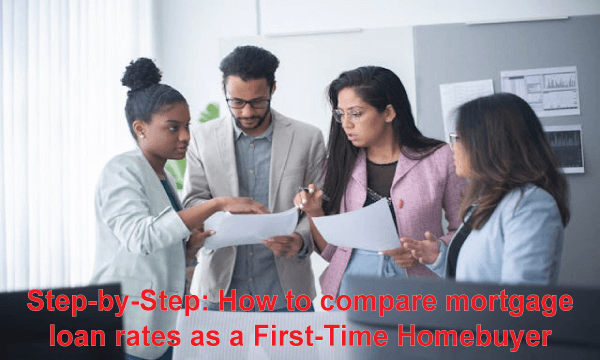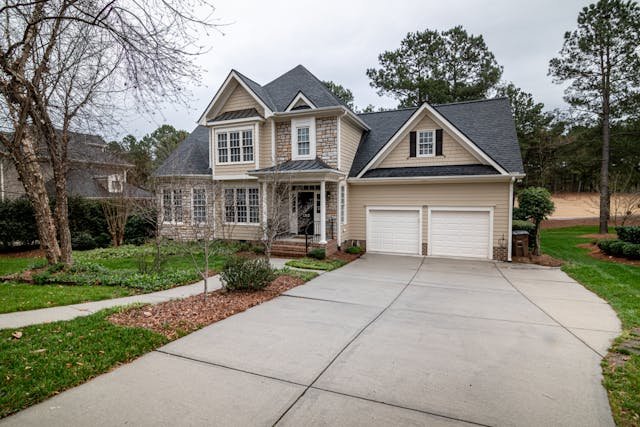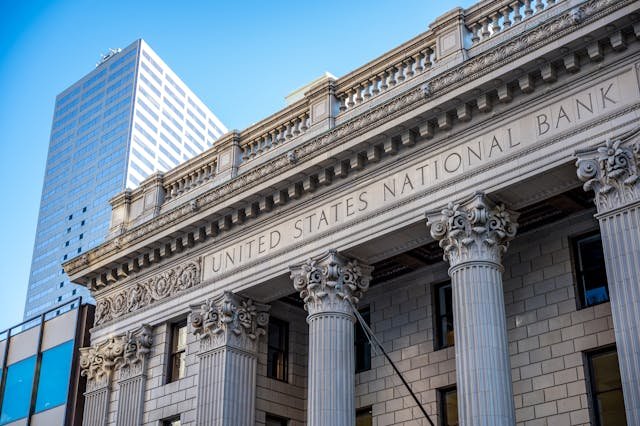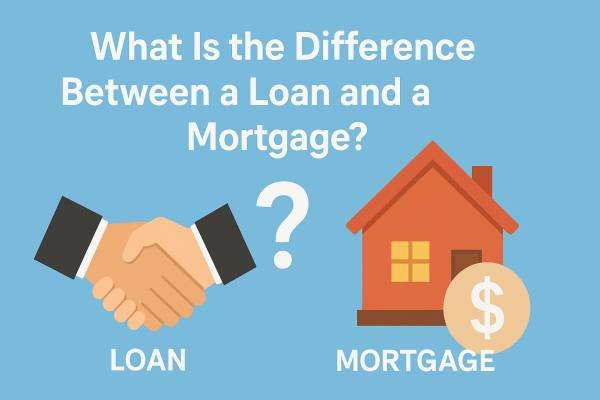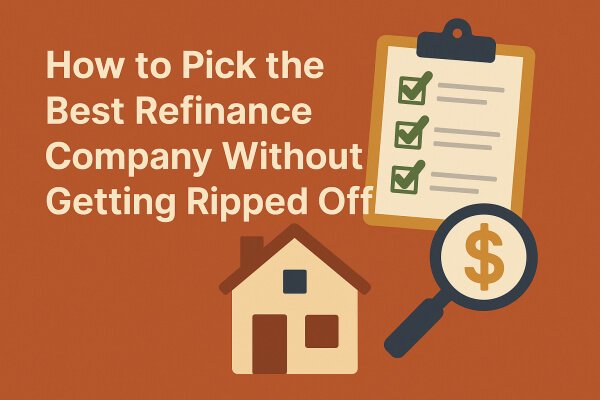Types of Mortgage Loans for First-Time Home Buyers in the US

Have you ever felt overwhelmed just thinking about all the types of mortgage loans for first-time homebuyers? You’re not alone.
This guide is for anyone gearing up to buy their first home in the US. We’ll walk through each loan type, chat about pros and cons, and share insider tips to help you pick the best fit for your wallet and your dream home.
By the end, you’ll know exactly which mortgage option matches your situation, how to compare rates like a pro, and what questions to ask lenders.
Why Understanding Mortgage Types Is Crucial
Choosing between types of mortgage loans for first-time homebuyers isn’t just busywork. It can literally save (or cost) you thousands over the life of your loan. Getting this right matters a lot.
Have you ever compared two loan estimates and wondered why one monthly payment is way lower? That’s all about interest rates and loan terms. A tiny dip in rate can knock hundreds off your payment each month and add up to big savings down the road.
| Loan Option | Interest Rate Estimate | Monthly Payment (30-yr)¹ | Total Paid Over 30 Years ¹ |
| Conventional 3.5% | 3.50% | $898 | $323,280 |
| FHA 3.75% | 3.75% | $926 | $333,360 |
| VA 3.25% | 3.25% | $870 | $313,200 |
¹Assuming a $200,000 loan. These home loan options demonstrate the tangible impact of rate differences on your financial situation.
Avoiding Homebuying Pitfalls: Choosing the Right Loan
Picking the wrong mortgage loan can mean surprise fees, higher mortgage insurance, or even being denied at the last minute. By understanding each loan’s rules, you sidestep stress and keep your budget intact.
Real Savings in Action
Want proof that mastering types of mortgage loans for first-time homebuyers pays off? First-time buyers who shop around and compare at least three lenders typically secure rates 0.25–0.50% lower than average. That small difference could mean $1,500–$3,000 saved every single year.
Types of Mortgage Loans for First-Time Homebuyers
Definition of Mortgage Loan Types
What exactly are “Types of Mortgage Loans for First-Time Homebuyers”? Simply put, they’re the different ways you can borrow money to buy your first home. Each loan type has its own rules around interest rates, down payments, and loan terms, and knowing the differences is key to finding the best mortgage rates for your situation.
How Lenders Categorize Loans
Lenders usually sort home loan options into two big buckets: government-backed and conventional.
- Government-backed loans (like FHA, VA, and USDA) come with a federal agency guarantee, which often means lower credit score requirements and down payments.
- Conventional loans are issued by banks or mortgage companies and aren’t insured by the government. For buyers with strong credit, they can offer the lowest APRs, but they also impose additional requirements such as higher credit scores and sometimes larger down payments.
At-a-Glance Comparison Table
Here’s a quick mortgage loan comparison to highlight how each option stacks up. Notice how down payment requirements, credit score minimums, and income limits vary. These factors have the potential to significantly impact your budget.
| Loan Type | Down Payment | Minimum Credit Score | Income Limits | Typical Interest Rate² |
| Conventional | 3%–5% | 620+ | None | 3.50%–4.00% |
| FHA | 3.5% | 580+ | None | 3.75%–4.25% |
| VA | 0% | No strict minimum³ | Service-based | 3.25%–3.75% |
| USDA | 0% | 640+ | Area & income limits | 3.50%–4.00% |
²Rates fluctuate daily. ² Always shop around for the best mortgage rates.
³VA lenders may require a 620+ score in practice, even though there’s no official minimum.
Conventional Loans
Conforming Conventional Loans
This simply refers to a loan that meets the standard limits set by Fannie Mae and Freddie Mac. Two big government-sponsored companies that help keep the mortgage market running smoothly.
Why do first-time buyers like these?
If your credit is solid, they offer some of the best mortgage rates. You’ll usually need:
- A minimum credit score around 620
- A down payment of at least 3% (yes, just 3%!)
- A steady income and low debt-to-income ratio
Non-Conforming (Jumbo) Loans
They’re for homes that cost more than the average loan limit (about $766,550 in 2025 for most U.S. areas), not just mansions.
So what makes a jumbo loan “non-conforming”?
It doesn’t follow the Fannie Mae and Freddie Mac rules, mainly because of the higher loan amount.
The ✅ Pros and ❌ Cons of Conventional Loans
| Loan Type | Pros | Cons |
| Conforming Loan | ✅ Lower interest rates for buyers with good credit | ❌ Harder to qualify with low credit or high debt |
| ✅ Only 3% down payment required for first-time buyers | ❌ PMI (Private Mortgage Insurance) required if down < 20% | |
| ✅ PMI can be removed when you reach 20% equity | ❌ Stricter income and asset documentation | |
| ✅ No upfront mortgage insurance premium (unlike FHA loans) | ||
| Non-Conforming (Jumbo) | ✅ Lets you finance high-cost homes over conforming loan limits | ❌ Requires high credit scores (usually 700+) |
| ✅ Often no PMI, even with less than 20% down | ❌ Higher down payment (10–20% typically) | |
| ✅ Competitive rates for financially strong borrowers | ❌ More detailed income/asset verification (lots of paperwork!) |
Government-Backed Loans
FHA Loans
Ever heard someone say, “I got my first home with an FHA loan”? FHA loans primarily cater to first-time buyers.
They’re backed by the Federal Housing Administration, which means the government takes on some of the risk for lenders, so they’re more willing to work with buyers who don’t have perfect credit or big savings.
Why first-time buyers love FHA loans:
- Only 3.5% down payment (yep, just 3.5%!)
- Credit scores as low as 580
- Flexible on income and debt-to-income ratio
Pros and Cons of FHA Loans
| Pros | Cons |
| ✅ Low down payment (3.5%) | ❌ Upfront mortgage insurance premium (usually 1.75% of loan) |
| ✅ Lower credit score accepted (as low as 580) | ❌ Monthly mortgage insurance lasts for the life of the loan¹ |
| ✅ Easier qualification for those with limited credit history | ❌ Property must meet stricter condition standards |
| ✅ Can use gift funds for down payment | ❌ Lower loan limits in some areas |
This option is only available unless you later refinance into a conventional loan.
This loan option is best suited for buyers who have lower credit scores, smaller savings, or who desire a more flexible approval process.
VA Loans
If you’re a veteran, active-duty service member, or a member of the National Guard or Reserves,
then you may qualify for a VA loan.
In fact, it’s undoubtedly one of the best home loan options available.
Backed by the U.S. Department of Veterans Affairs, VA loans offer benefits that are hard to beat.
What makes VA loans so special?
- 0% down payment
- No mortgage insurance (at all!)
- Super-competitive interest rates
Pros and Cons of VA Loans
| Pros | Cons |
| ✅ No down payment required | ❌ Only available to eligible veterans and military members |
| ✅ No private mortgage insurance (PMI) | ❌ VA funding fee (can be rolled into loan) |
| ✅ Lower average interest rates | ❌ Appraisal process can be stricter than conventional loans |
| ✅ Easier to qualify if you meet service requirements | ❌ Primary residence only—no second homes or investment properties |
This loan option is best suited for eligible veterans or service members who are seeking the best mortgage rates without requiring a down payment.gage rates without requiring a down payment.
USDA Loans
These categories of of loans USDA loans are designed for buyers purchasing homes in rural and some suburban areas—and they come with major perks.
Backed by the U.S. Department of Agriculture, USDA loans are ideal for lower- to moderate-income buyers who don’t mind living a bit outside the city.
What’s the catch?
You need to buy in an eligible area, and your income must fall within certain limits based on where you live and how many people are in your household.
Pros and Cons of USDA Loans
| Pros | Cons |
| ✅ 0% down payment | ❌ Only available in eligible rural/suburban areas |
| ✅ Low mortgage insurance cost | ❌ Income limits apply (varies by county and household size) |
| ✅ Competitive fixed interest rates | ❌ Can’t use for vacation homes or investment properties |
| ✅ Great option for lower/moderate-income buyers | ❌ Longer approval times due to extra processing |
This option is best suited for buyers with modest incomes who are seeking home loan alternatives outside of large metropolitan areas.
Quick Comparison Recap
| Loan Type | Down Payment | Credit Score Needed | PMI or MIP? | Best For |
| FHA | 3.5% | 580+ | Yes (MIP) | Low credit, small down payment |
| VA | 0% | Varies by lender | No | Eligible veterans/military buyers |
| USDA | 0% | 640+ | Yes (lower fee) | Rural buyers with moderate income |
Specialized & Alternative Programs for First-Time Buyers
These aren’t technically new types of mortgage loans for first-time homebuyers. However, they can be added to or combined with the main loan types you already learnt about.
State and Local First-Time Homebuyer Programs
Did you know most states have their types of mortgage loans for first-time homebuyers with better interest rates, special down payment help, and reduced fees?
Here’s what to look for:
- Below-market interest rates
- Grants or deferred-payment loans for down payment or closing costs
- Reduced mortgage insurance costs
- Education courses to help you qualify
These are usually run by your state’s Housing Finance Agency (HFA). Some examples:
| State | Program Name | Key Benefit |
| California | CalHFA First Mortgage + MyHome DPA | Down payment + closing cost help |
| Texas | My First Texas Home | Fixed-rate mortgage + DPA grant |
| Florida | Florida Assist (FL Assist) | Up to $10,000 in down payment aid |
| Illinois | IHDAccess Forgivable | Forgivable assistance over 10 years |
Down Payment Assistance (DPA)
If saving for a down payment feels impossible, DPA programs could be your ticket in the door.
Common DPA types:
- Grants (free money—you don’t repay it!)
- Forgivable loans (repaid only if you sell or refinance early)
- Deferred loans (repaid only when you sell the home)
- Second mortgages (usually low or zero interest)
Pros and Cons of Down Payment Assistance
| Pros | Cons |
| ✅ Makes homeownership possible sooner | ❌ May limit your choice of lenders or loan types |
| ✅ Reduces upfront cash needed | ❌ May come with higher interest rates on the primary mortgage |
| ✅ Some programs require no repayment | ❌ Often requires you to live in the home for several years |
| ✅ Can be combined with FHA, VA, USDA, or Conventional loans | ❌ May involve more paperwork or income restrictions |
Energy-Efficient Mortgages (EEMs)
You can actually roll in energy upgrades like new windows, insulation, or solar panels into your mortgage with an EEM.
These work with FHA, VA, and conventional loans and let you borrow a bit more to make your home greener and cheaper to run.
- Lower monthly utility bills
- Potential rebates/tax credits
- Adds value to your home
This is best suited for buyers who are planning upgrades or purchasing older homes that require energy improvements.
Employer and Community Assistance
Some employers, unions, and community organizations offer first-time homebuyer perks too! These may include:
- Employer-funded homebuying programs
- Local nonprofit grants
- Credit counseling and budgeting help
- Special programs for teachers, firefighters, and nurses
Don’t forget to ask your HR department, city housing office, or credit union. You might be surprised what’s available.
How to Choose the Right Mortgage Type a First-Time Homebuyer
There is no universally applicable types of mortgage loans for first-time homebuyers. The loan that’s right for your neighbour might be totally wrong for you. So, how do you decide? It starts with knowing yourself and your goals.
Step 1: Assess Your Financial Profile
Grab a notebook or open your notes app—we’re doing a quick self-check.
Ask yourself:
- What’s my credit score? (Be honest!)
- How much do I have saved for a down payment?
- What’s my monthly income vs. debt?
- How long do I plan to stay in the home?
If your credit is below 620, FHA might be your best bet.
Also, if you have military experience, VA loans can be a valuable resource.
If you’ve saved up 10% or more and have solid credit, a conventional loan might save you the most over time.
Step 2: Match Loan Features to Your Goals
Now think about what matters most to you. Is it a lower monthly payment? Less money upfront? Flexibility?
Here’s a quick cheat sheet:
| If your priority is… | Consider this |
| Lowest upfront cost | USDA (rural), VA, FHA |
| Lower monthly payment over time | VA (no PMI), Conventional |
| Buying in a high-cost area | Jumbo Loan or FHA High-Balance |
| Flexibility with lower credit score | FHA |
| Avoiding mortgage insurance | VA, or 20% down conventional |
Step 3: Shop & Compare Like a Pro
Here’s a secret: lenders don’t all offer the same rate on the same loan. That means you have to shop around.
Your Action Plan:
- Get quotes from at least 3 lenders
- Request a loan estimate to ensure a fair comparison.
- Look at more than just the interest rate. Check APR, fees, and PMI/MIP costs
- Ask about locking your rate if you’re ready to move forward
Common Pitfalls & How to Avoid Them
We’re all human. Of course, buying your first home can be both exciting and stressful. But with the right knowledge, you can avoid the most common and costly mistakes first-time buyers often make when choosing between different types of mortgage loans.
1. Overstretching Your Budget
You get pre-approved for a certain amount, and suddenly you’re looking at homes at the very top of that price range. Sound familiar?
But here’s the thing: just because a lender says you can afford it doesn’t mean it won’t squeeze your lifestyle later.
Avoid it by:
- Creating your own max monthly payment based on comfort, not just approval
- Factoring in taxes, insurance, maintenance, and HOA fees
- Budgeting for future expenses (hello, new furniture or a surprise roof repair)
2. Focusing Only on the Interest Rate
We all want the best mortgage rates. However, it’s important to maintain a balanced perspective. A super-low rate isn’t helpful if you’re paying a high fee or points upfront.
Avoid it by:
- Comparing APR (which includes fees), not just the rate
- Asking for a full Loan Estimate from each lender
- Looking at the total cost over time, not just the monthly payment
3. Ignoring Closing Costs
Closing costs can range from 2% to 5% of your home’s price. If you’re buying a $300K home, that could be $6,000–$15,000 out of pocket.
Avoid it by:
- Asking your lender for a closing cost breakdown early
- Seeing if your state’s first-time buyer programs cover any of it
- Negotiating with sellers to help cover closing costs
4. Skipping Pre-Approval
Buyers wait to get pre-approved until they find a house they love, and by then, it’s too late. Another buyer (with a pre-approval letter in hand) scoops it up.
Avoid it by:
- Getting pre-approved before you start touring homes.
- Making sure your credit report and documents are ready to go
- Asking your lender to explain your loan options in detail up front.
5. Not Locking In Your Rate at the Right Time
Interest rates can shift daily. And sometimes, waiting a week could mean a higher monthly payment for the next 30 years.
Avoid it by:
- Monitoring the market once you’re under contract
- Asking your lender when it’s smart to lock your rate
- Understanding whether your rate lock includes a “float-down” option (some do!)
6. Forgetting to Ask Questions
You should not approach a mortgage casually or without careful consideration. There are no irrelevant questions. It’s important to avoid making costly mistakes.
Avoid it by:
- Asking lenders to explain loan terms in plain English
- Double-checking how long PMI lasts (FHA vs. conventional is a big difference!)
- Confirming what happens if you refinance or pay off early
Quick Recap: Pitfalls Checklist
| ❌ Pitfall | ✅ How to Avoid It |
| Buying more house than you can afford | Create your own max payment comfort zone |
| Rate-shopping lazily | Compare at least 3 lenders with full APR info |
| Forgetting closing costs | Budget an extra 2%–5% or ask for help programs |
| No pre-approval | Get it before home shopping begins |
| Waiting too long to lock rates | Stay alert & talk to your lender about timing |
| Not asking enough questions | Be curious—it could save you thousands |
From Pre-Approval to Closing
Considering the diffrent type of mortgage loans for first-time homebuyers. You will agree that buying your first home isn’t a mystery; it’s a step-by-step process. And once you understand the flow, it feels way less intimidating.
Let’s walk through what happens after you choose your loan type and lender.
Step 1: Get Pre-Approved
This process is akin to receiving your financial approval. The lender looks at your income, credit, debt, and savings to tell you how much you can borrow and what loan types you qualify for.
You’ll get a pre-approval letter, which:
- Shows real estate agents you’re serious
- Gives sellers confidence you can actually buy their home
- Helps you focus on homes within your price range
What you’ll need:
- Recent pay stubs (last 30 days)
- W-2s or tax returns (last 2 years)
- Bank statements (last 2 months)
- ID and Social Security number
- Credit check authorization
Step 2: Go House Hunting & Make an Offer
Discovering the perfect home is the exciting part. When you spot a home you love, your real estate agent will help you make an offer. If the seller accepts, you’ll sign a purchase agreement, and things start moving fast.
Step 3: Loan Processing & Underwriting
Once your offer’s accepted, your lender kicks off the real mortgage work.
Here’s what transpires in the background:
- Loan estimate: You’ll receive a breakdown of your rate, terms, monthly payment, and closing costs.
- Appraisal: A third-party appraiser checks that the home is worth what you’re paying.
- Underwriting: The lender double-checks all your info: income, credit, and assets. The lender must formally approve your loan.
Pro tip: Stay responsive during underwriting. If they ask for an extra pay stub or explanation, send it ASAP to keep things on track.
Step 4: Final Approval & Clear to Close
If all goes well (and you’ve chosen the right loan from the available types of mortgage loans for first-time homebuyers), your lender gives the green light: “clear to close”.
You’ll:
- Review the Closing Disclosure (similar to the Loan Estimate)
- Do a final walk-through of the home
- Schedule a closing date
Step 5: Closing Day
This is it! You’ll sit down (either in person or virtually), sign a lot of documents, pay your closing costs and down payment (via wire or cashier’s check), and get the keys to your first home.
After that, the house is officially yours, and you’ll start making monthly mortgage payments based on the loan type you chose.
Homebuying Timeline at a Glance
| Stage | Typical Timeframe |
| Pre-Approval | 1–3 days |
| Home Shopping | 1 week–3 months (varies) |
| Offer Accepted | Day 0 of escrow |
| Loan Processing | 2–3 weeks |
| Underwriting | 1–2 weeks |
| Closing | 1 day (plus funding) |
Conclusion
Before buying a home, it’s wise to learn about the types of mortgage loans for first-time buyers. The key is for you to match your loan to your personal situation. Whether you’re working with a tight budget, have a strong credit score, or need help covering your down payment, there’s likely a mortgage option that fits you perfectly.
FAQs
1. What’s the minimum credit score I need to buy my first home?
It depends on the loan:
- FHA: 580 (with 3.5% down)
- Conventional: 620+
- VA: No official minimum, but most lenders look for 620+
- USDA: Typically 640
Tip: The higher your score, the better your interest rate, so even 20 extra points can save you money.
2. How much down payment do I really need?
You can buy a home with as little as:
- 0% with VA or USDA loans
- 3.5% with FHA
- 3% with some first-time buyer conventional programs
But keep in mind: more down = lower monthly payment + less mortgage insurance.
3. Can I combine FHA or other loans with down payment assistance?
Absolutely. Many DPA (Down Payment Assistance) programs work alongside FHA, USDA, and even conventional loans.
Just make sure:
- Your lender and local program allow it
- You understand if the assistance is a grant, forgivable loan, or repayable second mortgage
4. What happens if interest rates drop after I lock mine in?
Most rate locks are… locked. But some lenders offer a “float-down” option, which lets you snag a lower rate if it drops during the lock period.
Ask your lender: “Does your rate lock include a float-down feature?”
5. What’s the deal with mortgage points? Should I buy them?
Mortgage points = prepaid interest. You pay more upfront to get a lower interest rate over the life of your loan.
Here’s when it might make sense:
- You plan to stay in the home long-term
- You can afford the extra upfront cost
- You want to reduce your monthly payment
If not, you might be better off keeping that cash for moving costs, furniture, or emergencies.
6. Can I get a mortgage if I’m self-employed or a freelancer?
Yes, but it can be trickier. You’ll usually need:
- 2 years of consistent self-employment income
- Strong credit and low debt
- Documentation like tax returns, 1099s, and business bank statements
Pro tip: Lenders may average your last 2 years of income to determine how much you qualify for.
7. How do I know which loan is best for me?
Start by comparing your credit score, savings, income, and goals with what each loan type offers. Then talk to a lender who can walk you through a few mortgage loan comparisons based on your situation.
Don’t forget: it’s totally normal to ask questions—this is probably the biggest purchase you’ve ever made!
Footnotes & Sources
- Fannie Mae & Freddie Mac Conforming Loan Limits
- Source: Federal Housing Finance Agency (FHFA)
- https://www.fhfa.gov/DataTools/Downloads/Pages/Conforming-Loan-Limits.aspx
- FHA Loan Requirements & Limits
- Source: U.S. Department of Housing and Urban Development (HUD)
- https://www.hud.gov/buying/loans
- VA Loan Eligibility & Benefits
- Source: U.S. Department of Veterans Affairs
- https://www.va.gov/housing-assistance/home-loans/
- USDA Rural Housing Loan Program
- Source: U.S. Department of Agriculture (USDA)
- https://www.rd.usda.gov/programs-services/single-family-housing-guaranteed-loan-program
- Minimum Credit Scores by Loan Type
- Mortgage Insurance and PMI Rules
- Source: Consumer Financial Protection Bureau (CFPB)
- https://www.consumerfinance.gov/ask-cfpb/what-is-private-mortgage-insurance-en-122/
- Down Payment Assistance Programs
- Source: National Council of State Housing Agencies (NCSHA)
- https://www.ncsha.org/housing-help/
- Energy Efficient Mortgage (EEM) Info
- Source: HUD.gov
- https://www.hud.gov/program_offices/housing/sfh/eem/eemhog98
- Average Closing Costs by State
- Source: Bankrate
- https://www.bankrate.com/mortgages/closing-costs-by-state/
- Benefits of Rate Shopping for Mortgages
- Source: CFPB Study on Mortgage Shopping
- https://files.consumerfinance.gov/f/documents/cfpb_mortgage-shopping-study.pdf
- Loan Estimate & Closing Disclosure Guide
- Source: CFPB “Your Home Loan Toolkit”
- https://files.consumerfinance.gov/f/201503_cfpb_your-home-loan-toolkit-web.pdf
- State First-Time Homebuyer Programs
Source: NerdWallet First-Time Buyer Program Directory
https://www.nerdwallet.com/best/mortgages/first-time-home-buyer-programs-by-state
